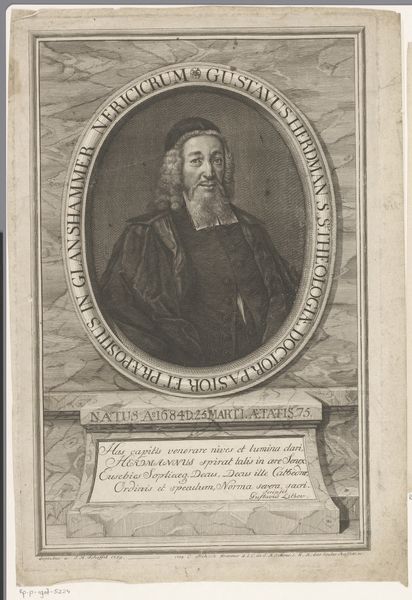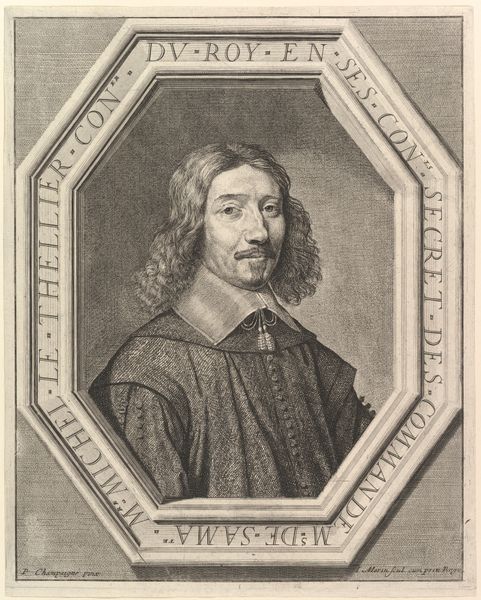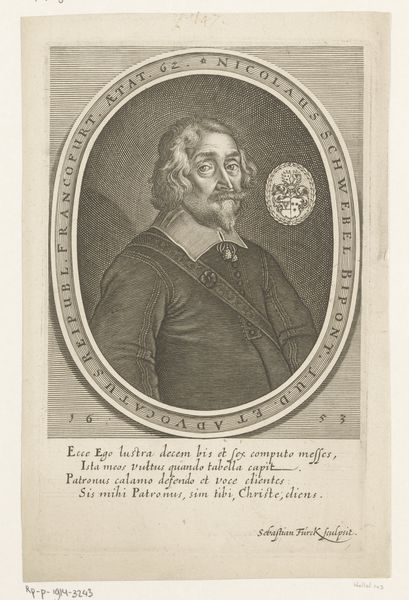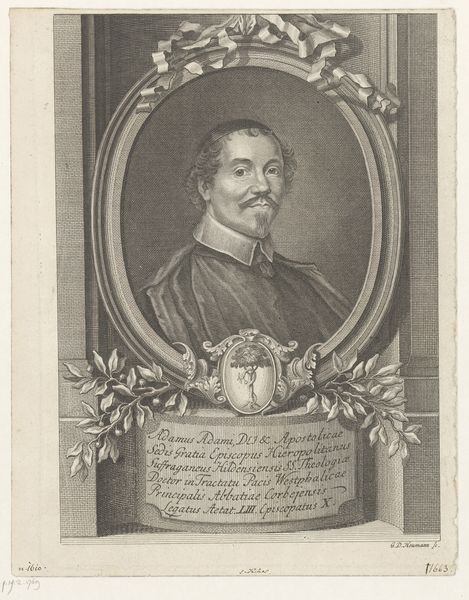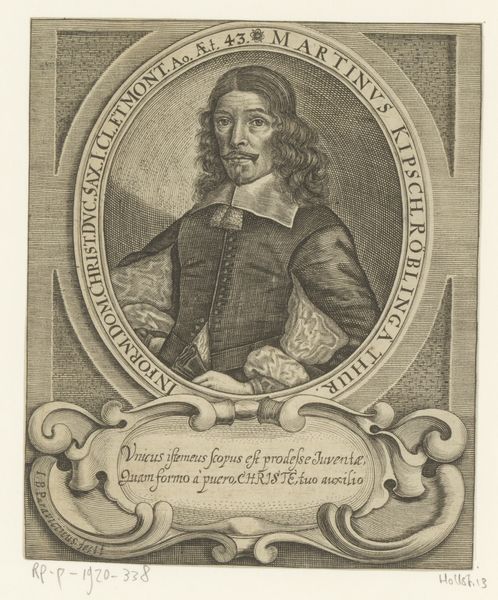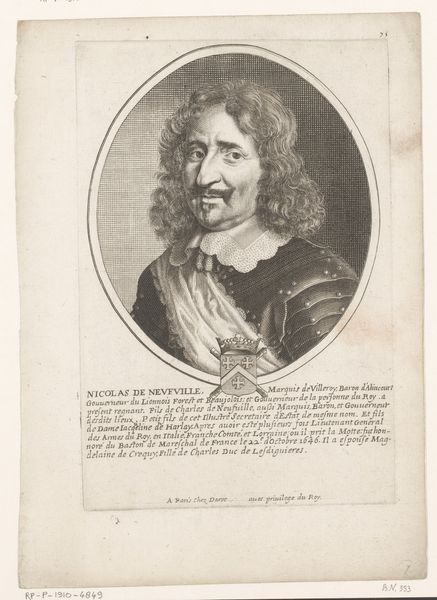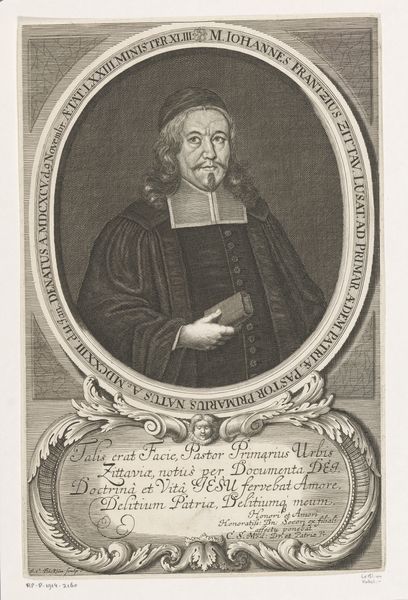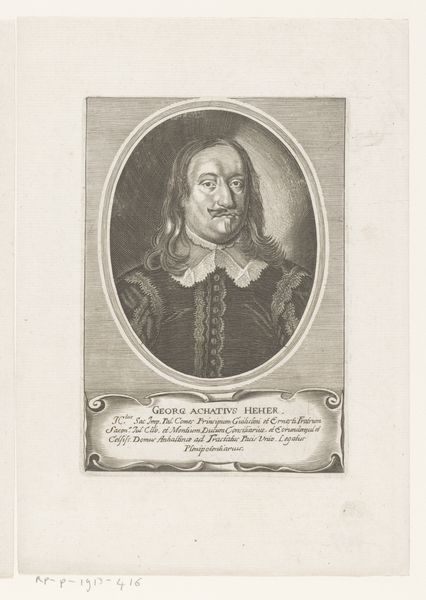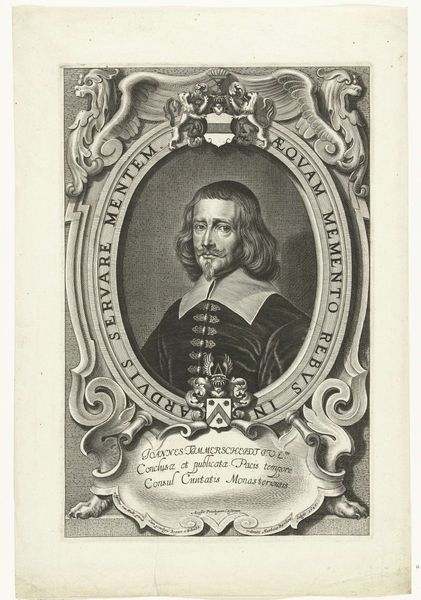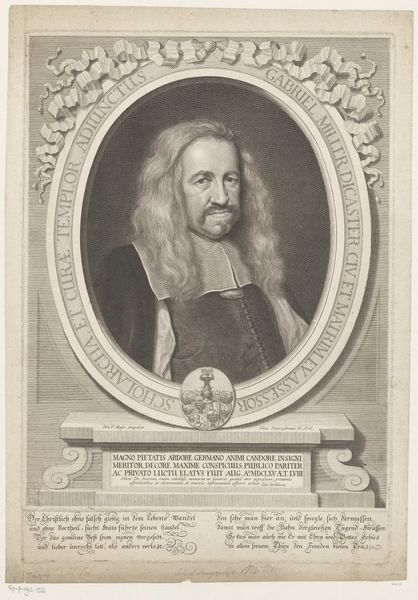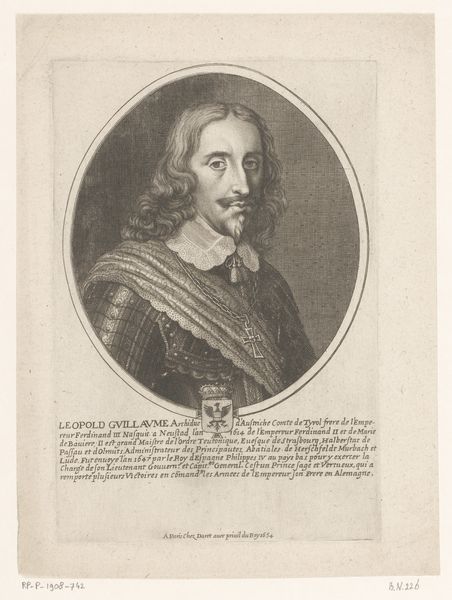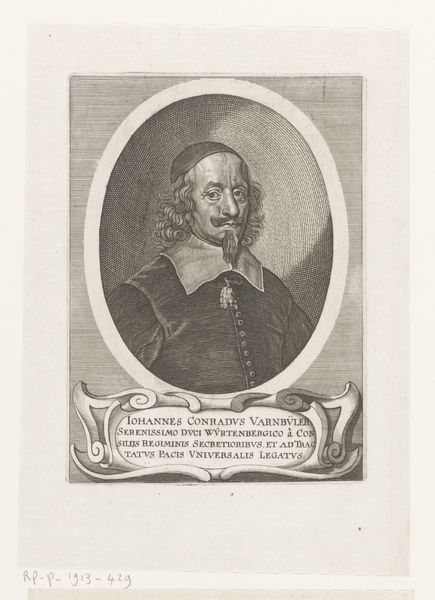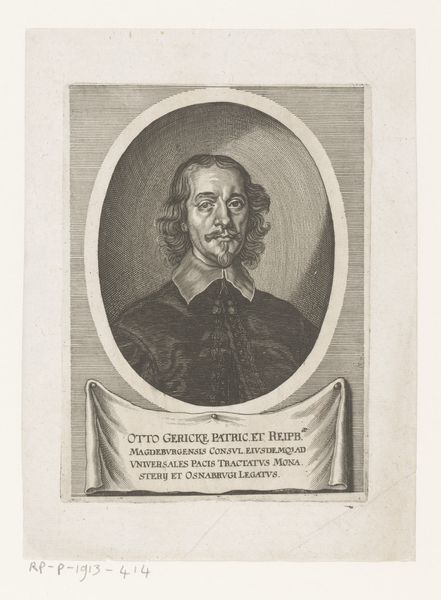
engraving
#
portrait
#
baroque
#
pencil drawing
#
academic-art
#
engraving
Dimensions: height 204 mm, width 138 mm
Copyright: Rijks Museum: Open Domain
Curator: Here in the Rijksmuseum, we have a fascinating portrait of Johannes Baldovius. The engraving, made between 1648 and 1671 by Conrad Buno, offers a detailed glimpse into the life of a prominent figure. Editor: The detail is incredible, isn't it? The subtle tonal gradations achieved purely through line work... It gives the figure such a serene yet firm presence. The frame seems a bit heavy, though, slightly distracting from the face itself. Curator: That "heaviness", as you call it, reflects the symbolic weight attached to portraits of religious figures at the time. The inscription and ornate border broadcast Baldovius’s importance and position within the church and academic circles. Note the Latin and Hebrew inscriptions which serve to reinforce the depth of Baldovius's learning. Editor: Of course, I can’t help but notice the compositional strategies at play: the oval format focuses attention sharply onto the sitter, whose dark garb forms a stark contrast to his fine white collar, thus drawing our eyes upward toward his visage. That direct gaze is expertly rendered to meet and hold our own. Curator: The purpose was also to communicate the sitter’s virtuous nature, so yes, the direct gaze would have served to promote that intent! Baldovius was, amongst other things, a superintendent and a pastor. We could view the portrait as a means to express the strength and dignity expected of religious authority. Editor: Perhaps, or we can observe how the cross-hatching intensifies within the shadows and adds spatial depth. The figure appears solid and imposing in a shallow field. But looking closer at that collar—the texture is remarkable. Buno captures the fine weave with the simplest of strokes! Curator: The success of such commissioned work rested on effectively conveying the subject's status, influence and standing. The artistry was of course a necessary component. Here, that end seems particularly well achieved, as Baldovius projects a dignified image that supported the church and academy of the period. Editor: Indeed, whether read for symbolic intention or visual dynamics, this piece exhibits clear excellence in both function and form. Curator: Agreed. It really does provide an interesting visual and historical record.
Comments
No comments
Be the first to comment and join the conversation on the ultimate creative platform.
